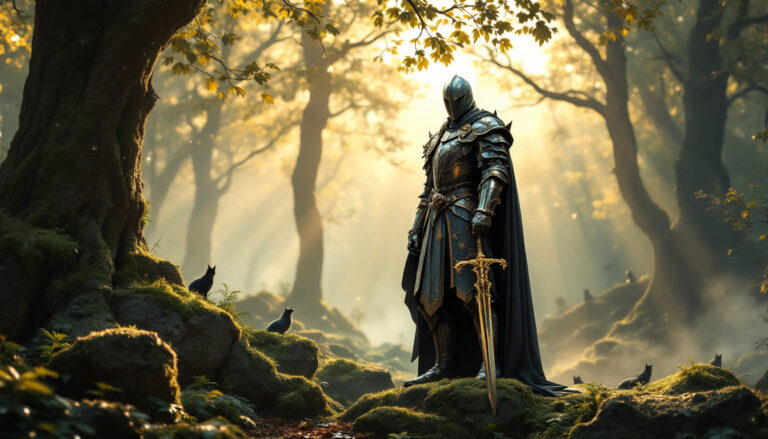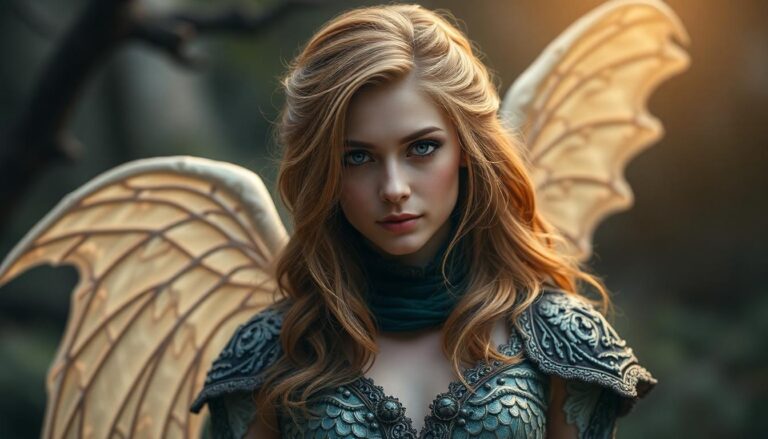Scott Pilgrim Color Collection Vol. 1 – A Look at a Beloved Classic
Few graphic novels have the cultural staying power of Scott Pilgrim. With vibrant artwork, quirky humor, and a heartfelt story, Bryan Lee O’Malley’s Scott Pilgrim Color Collection Vol. 1 breathes new life into this fan-favorite series. Whether you’re revisiting Scott’s chaotic world or discovering it for the first time, this colorized edition adds a fresh dimension to its unforgettable charm. Perfect for seasoned graphic novel fans or those just starting out, it’s a fun, visually rich read that keeps you turning the pages.
Overview of Scott Pilgrim Color Collection Vol. 1
Bryan Lee O’Malley’s Scott Pilgrim Color Collection Vol. 1 injects new vibrancy into the beloved series with this reimagination in full color. This collection, which includes Scott Pilgrim’s Precious Little Life and Scott Pilgrim vs. The World, captivates readers with a mix of laugh-out-loud humor, heartfelt moments, and action-packed sequences. The story blends the mundane struggles of growing up with over-the-top, comic-book-style battles, creating a unique narrative that is both grounded and fantastical.
Plot and Main Themes
At its core, Scott Pilgrim Color Collection Vol. 1 follows the 23-year-old Scott Pilgrim, whose life takes a surreal twist when he meets the enigmatic Ramona Flowers. Scott spends his days juggling band practice with his group, Sex Bob-omb, and navigating an awkward relationship with his girlfriend, Knives Chau. However, his budding romance with Ramona comes with one major complication: her seven evil exes. To date Ramona, Scott must defeat each of these exes in video-game-inspired fight sequences that are as imaginative as they are intense.
The story explores deeply relatable themes such as love, personal growth, and the struggles of young adulthood. The humor is sharp and often self-aware, poking fun at Scott’s absurd circumstances while delivering emotional depth. The romantic elements combine sweet, awkward moments with realistic portrayals of the complexities of modern relationships. Amid the humor and action, O’Malley weaves in questions about self-identity, responsibility, and learning to accept one’s own flaws. The mixture of playful banter with these introspective themes is what makes the series resonate with so many readers.
For those new to the series or looking for a refreshing dive back into Scott’s world, this color collection available on Oni Press offers a visually stunning entry point.
The Protagonist: Scott Pilgrim
Scott Pilgrim is far from your typical hero. He’s a relatable mix of charm, immaturity, and self-doubt that makes him both endearing and frustrating. Scott is a 20-something slacker, bassist, and video game fanatic struggling to figure out life. He’s carefree and impulsive, often diving into situations without considering the consequences. While his quick wit and easygoing nature draw readers in, his selfishness and lack of self-awareness provide a realistic glimpse into the flaws many experience during young adulthood.
What makes Scott’s journey compelling is his gradual growth throughout the story. Initially, he avoids taking responsibility for his actions, both in relationships and in life. However, as he confronts Ramona’s exes — and the emotional baggage that comes with them — Scott is forced to reevaluate himself. Through these battles, O’Malley metaphorically explores the idea that everyone has “baggage,” and relationships require internal work as much as external effort.
Readers tend to either connect with or critique Scott, depending on their own perspectives. Some see him as a lovable goof who’s trying his best, while others find his actions immature and selfish. In a way, Scott’s imperfections are what make him relatable. He’s not a polished superhero; he’s a flawed, everyday person trying to navigate love and adulthood — much like the rest of us.
For a deeper dive into Scott’s character and the series’ themes, you can explore more in this fandom resource.
Visual Appeal and Art Style
The Scott Pilgrim Color Collection Vol. 1 isn’t just a rerelease—it’s a complete reimagining of how the story comes to life on the page. The shift to full color and polished visuals transforms Bryan Lee O’Malley’s original work into something even more dynamic and engaging. This edition amplifies the graphic novel’s unique charm, making it even more accessible to new readers while offering fans something fresh to appreciate.
Character Designs and Action Scenes
One of the most striking aspects of Scott Pilgrim has always been its unforgettable character designs. Scott, Ramona, and the wide cast of supporting characters all have a distinct visual identity. Their exaggerated expressions, quirky details, and bold outlines make them instantly recognizable. O’Malley’s art style takes inspiration from indie comics and manga, blending Western and Eastern influences into something uniquely his.
Action scenes, which are critical in a series where epic battles are central to the plot, are brought to life with kinetic energy. The transitions between calm moments and over-the-top fights are seamless. Characters leap off the page, fueled by sharp lines and dramatic shading. The visual exaggeration enhances the humor and stakes in these scenes. You can practically feel the punches and impacts as they unfold.
The subtle shift in artistic tone between introspective moments and chaotic fights is what makes the book resonate visually. Whether it’s Scott’s awkward interactions with his bandmates or an all-out brawl with an evil ex, every panel feels like it’s meticulously designed to maximize impact. For more about the progression of O’Malley’s art style, check out this Reddit discussion on the art’s evolution.
Impact of Color in the New Edition
The move to full color in Scott Pilgrim Color Collection Vol. 1 isn’t just a cosmetic upgrade—it fundamentally changes how the story is experienced. The original black-and-white art held its own charm, but the addition of vibrant colors breathes new life into every page. It’s like seeing the world of Scott Pilgrim through a completely different lens.
Color adds emotional depth to scenes in a way that grayscale couldn’t fully capture. For example, Ramona’s brightly-hued hair changes from one vibrant shade to another, symbolizing her shifting moods and mysterious nature. The fight scenes also benefit hugely from the energetic use of colors, highlighting the intensity and impact of each clash. The emotional highs and lows of the story feel sharper, mirroring the visuals’ new richness.
The backgrounds, now bursting with hues, give the settings a sense of place and atmosphere that complements the story’s whimsical tone. Urban Toronto feels alive with its snow-covered streets, bustling venues, and eclectic apartments. The use of color as a storytelling device mirrors what experts mention in how color enhances graphic novels, making readers feel more connected to the narrative.
For readers who’ve experienced this series before, the color edition offers a fresh opportunity to rediscover its beauty. For newcomers, it ensures an immersive and visually stunning entry into Scott Pilgrim’s chaotic world. Each panel feels like it’s leaping off the page, inviting you to get lost in its colorful chaos.
Humor and Writing Style
The humor and writing style of Scott Pilgrim Color Collection Vol. 1 are what set it apart from other graphic novels. The story is packed with sharp wit, self-aware comedy, and a tone that never takes itself too seriously—all of which make it both memorable and endlessly entertaining. Bryan Lee O’Malley has a knack for bringing a balance of lighthearted humor and emotional depth, ensuring the laughs don’t distract from the story’s core themes. Let’s dive into the book’s playful dialogue and its ability to blend everyday life with over-the-top fantasy.
Dialogue and Banter
One of the standout aspects of Scott Pilgrim is its snappy dialogue. Every conversation feels alive, brimming with personality. The characters have a way of speaking that makes them feel authentic and relatable, yet their exchanges are peppered with humor that gives the story its unique edge. Scott himself delivers hilariously awkward one-liners, while side characters like Ramona and Wallace bring their own distinct voices, adding layers to the interactions.
But it’s not just about laughs. The witty banter often reveals deeper dynamics, helping you understand the relationships between characters. For example, Scott’s awkward but endearing conversations with Knives Chau highlight both his immaturity and the way he tries (and often fails) to navigate relationships. On the flip side, Wallace Wells’ commentary provides both comedic relief and moments of brutal honesty that Scott desperately needs.
The dialogue reflects the kind of humor that fans of pop culture will love—referential, fast, and often absurd. Readers familiar with the series will appreciate how the jokes flow naturally, creating moments you’ll want to revisit. This Reddit discussion highlights how the humor continues to evolve, even in its transition to full color, maintaining a fresh and engaging feel.
Balancing Everyday Life With Fantasy
One of the greatest strengths of Scott Pilgrim Color Collection Vol. 1 is its ability to switch between mundane realism and wild, fantastical elements. Scott’s life seems like any other 20-something at first glance—band practice, dating dilemmas, and the occasional existential crisis. The relatability of these everyday moments makes the story’s fantasy-driven action sequences feel even more impactful.
Take, for example, Scott battling Ramona’s evil exes. While the fights are over-the-top and video game-inspired, the stakes always feel personal. These battles aren’t just physical; they’re metaphors for the hurdles people face when dealing with their partner’s past. The surreal combats exist side by side with more grounded scenes, like Scott hanging out with his bandmates or debating whether to make toast.
What truly makes this seamless is O’Malley’s writing style. He blends these elements with ease, using humor and self-awareness to address the absurdity of the situation without taking away from its emotional layers. If you’re curious about how these fantasy elements enhance character development, check out this Statesman article, which explores their importance in the series.
This balance between the everyday and the fantastical invites readers to stay hooked on the narrative. Whether it’s a casual conversation about garlic bread or a showdown filled with anime-style explosions, the transitions always feel natural. It’s proof that Scott Pilgrim is so much more than just a “fight comic” — it’s a vivid exploration of growing up, told through a lens that’s as relatable as it is wildly imaginative.
Praise and Criticism From Readers
The Scott Pilgrim Color Collection Vol. 1 has garnered significant attention from fans and newcomers alike. Readers often share vibrant opinions about what resonates with them and what doesn’t. The response is a kaleidoscope of emotions, much like the graphic novel’s colorful pages.
What Readers Love
Fans of Bryan Lee O’Malley’s work are quick to highlight the standout elements in Scott Pilgrim Color Collection Vol. 1. Here are the most praised aspects:
- Humor: The series is packed with witty one-liners, self-aware jokes, and moments that are laugh-out-loud funny. Scott’s awkwardness and the snarky comments from supporting characters like Wallace Wells often steal the show.
- Art Style: The unique blend of Western and manga influences creates a visual style that feels fresh and engaging. The full-color treatment has been especially celebrated, with one review noting that it “enhances the characters’ emotions and environments” (source).
- Character-Driven Plot: Readers frequently compliment the depth of the characters. Scott’s flaws, as well as his growth, make his journey relatable while keeping the story intriguing. Ramona Flowers’ mystery and charisma also deserve mention as a driving force behind the narrative.
- Engaging Progression: The story’s mix of day-to-day struggles and epic, over-the-top action sequences keeps readers hooked. The battles with Ramona’s evil exes are imaginative and well-paced, making them feel like emotional and physical obstacles for Scott to overcome.
For many, this collection is a perfect mash-up of heartfelt storylines and whimsical escapism, capturing the ups and downs of young adulthood in a refreshing way. You can find additional positive insights in the Goodreads reviews.
Points of Contention
No creative work is without its critics, and Scott Pilgrim Color Collection Vol. 1 is no exception. While widely adored, some readers have pointed out areas they found problematic:
- Potentially Problematic Relationships: Scott’s behavior is often described as selfish or immature, which can feel off-putting for some readers. His relationships, especially with Knives Chau, have raised eyebrows, with some calling the dynamic “uncomfortable” (source).
- Stereotyping: Some characters and jokes might feel dated to contemporary readers. The depiction of Ramona as an enigmatic “manic pixie dream girl” figure has been critiqued for being trope-heavy.
- Randomness and Chaos: A few readers mention that the storyline can feel disjointed or overly chaotic at times. While many view this as part of the series’ charm, others find it hard to follow. A reviewer commented, “It’s fun but often feels like it’s all over the place” (source).
These critiques don’t diminish the book’s overall appeal, but they provide important context for readers who prefer cohesive narratives or modern sensibilities. The duality in feedback highlights how Scott Pilgrim walks a fine line between quirky brilliance and divisive storytelling.
Both the praise and criticism ultimately showcase the enduring impact of Scott Pilgrim Color Collection Vol. 1. Whether you view it as an amusing, colorful romp or a product of its time, it’s undeniable that the series sparks conversations and leaves lasting impressions.
Comparison to the Movie Adaptation
When a beloved graphic novel like Scott Pilgrim gets turned into a movie, fans often wonder: does it truly capture the same magic? Edgar Wright’s Scott Pilgrim vs. The World manages to bring the series to life in vibrant and unexpected ways, but the differences between the source material and its adaptation are undeniable. Let’s take a closer look at two key aspects of this comparison.
Faithfulness to the Source Material
How well does the movie stick to the essence of the original graphic novel? The short answer: it’s both faithful and different in equal measure.
The movie, directed by Edgar Wright, is a visual masterpiece that perfectly conveys the quirky, fast-paced humor of Bryan Lee O’Malley’s work. The film integrates video game-inspired visuals, punchy music, and exaggerated action sequences to replicate the comic’s unique atmosphere. Scott’s fights with Ramona’s seven evil exes translate exceptionally well on screen, offering flashy choreography and editing that mirrors the graphic novel’s over-the-top style (source).
However, the film condenses its story due to time constraints. The graphic novel unfolds over six volumes, giving ample time for character development, deeper backstories, and exploration of themes like personal growth and relationships. For example, Ramona in the graphic novel is more fleshed out, with subtle nuances in her dialogue and actions. These details are somewhat lost or simplified in the movie adaptation (source).
Still, the film shines in staying true to the graphic novel’s tone. From witty banter to the exaggerated absurdities of Scott’s life, it captures the essence of what makes Scott Pilgrim special. But if you’re looking for a deeper dive into the characters’ emotions and personal arcs, the books still hold the edge.
Advantages of the Graphic Novel
The graphic novel isn’t just the source material—it’s a medium that offers its own advantages compared to the movie.
- Rich Character Development: The beauty of a graphic novel is its ability to slow down and explore its characters. Over six volumes, we see Scott evolve, Ramona’s past slowly unravel, and secondary characters like Knives and Wallace get their moments to shine (source). The movie, by contrast, had to compress much of this into a two-hour runtime.
- Artistic Freedom: O’Malley’s visually dynamic art style gives readers the chance to fully immerse themselves in Scott’s world. Each panel is carefully crafted to highlight emotions, humor, and action. The artistic flexibility of graphic novels enables creative expression that doesn’t rely on CGI or practical effects like films do (source).
- Pacing and Subtlety: In the book, the story progresses at a comfortable pace, allowing moments to breathe. Subtle exchanges, like those that highlight Ramona’s complexity or Scott’s personal struggles, carry more weight in the graphic novel.
- Visual Storytelling: While the movie is visually stunning, the graphic novel uses its medium to experiment in ways films can’t. For instance, unique panel layouts, symbolic imagery, and changes in art style enhance the storytelling experience (source).
Ultimately, it’s not about which is “better.” Both the graphic novel and movie bring something unique to the table. The graphic novel gives you the freedom to dive deeper into Scott Pilgrim’s chaotic world, while the movie offers an energetic, streamlined version of the story. It’s worth experiencing both to truly appreciate how this series thrives across different mediums.
Conclusion
Bryan Lee O’Malley’s Scott Pilgrim Color Collection Vol. 1 is more than just a reimagined classic—it’s a must-read for fans and newcomers alike. The vibrant full-color artwork breathes new energy into an already iconic story, making each page feel fresh and engaging. It’s the perfect blend of humor, action, and heartfelt storytelling that captures the chaos of young adulthood with charm and wit.
Whether you’re a longtime fan revisiting Scott’s world or new to the series, this collection offers a visually stunning gateway into a timeless tale. Don’t just take my word for it—dive into its colorful panels and experience the magic firsthand. What are your thoughts? Share your favorite moments or characters in the comments!







